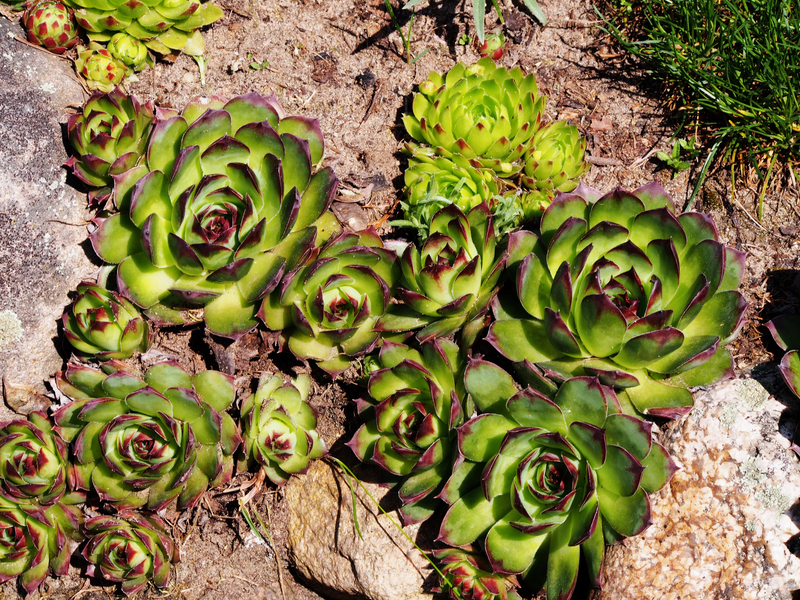Masterfully nurturing your orchids to vibrant life
Posted on 23/05/2025
Masterfully Nurturing Your Orchids to Vibrant Life: The Complete Guide
Orchids have long captivated plant lovers with their exotic blooms and intricate beauty. Yet, caring for these magnificent plants can feel daunting, especially for beginners. Masterfully nurturing your orchids to vibrant life is entirely within your reach--whether you're tending a brilliant Phalaenopsis, an elegant Cattleya, or another dazzling variety. In this comprehensive guide, you'll discover everything you need to know to grow healthy, beautiful orchids that flourish all year round.
Understanding Orchids: Exotic, Rewarding, and Surprisingly Adaptable
Orchids form one of the largest and most diverse plant families in the world, with over 25,000 species. Each type has its own unique needs, but there are general principles that apply to most species commonly kept as houseplants. Whether you are aiming to master the care of orchids, nurture vibrant orchids, or simply keep your plant alive and blooming, a few key basics are crucial for success.
Popular Orchid Varieties for Home Growers
- Phalaenopsis (Moth Orchid): The most popular houseplant orchid, famed for its long-lasting, elegant blooms.
- Cattleya: Known as the "Queen of Orchids," these display big, vibrant flowers in various colors.
- Dendrobium: Versatile and hardy, ranging from beginner-friendly to rare, specialist varieties.
- Oncidium: Often called "dancing ladies" for their fanciful yellow and brown blossoms.
- Paphiopedilum (Slipper Orchid): Recognizable by its pouch-like flower, these add unique character to any collection.

Essential Environmental Conditions: Crafting the Ideal Orchid Home
Vibrantly nurturing your orchids begins with providing the right environment. Orchids are epiphytes in their native habitats--meaning they grow attached to trees rather than in soil. Mimicking these natural conditions is key to promoting robust health and repeat flowering.
1. Lighting: Delivering the Right Sunlight
- Bright, Indirect Light: Most household orchids, like Phalaenopsis, thrive in bright but indirect sunlight. Direct sunlight can scorch their tender leaves. A location near an east or west-facing window, shielded by sheer curtains, is ideal.
- Monitor leaf color: Healthy leaves should be a vibrant, light green. Dark green leaves often indicate too little light, while yellowish or red-tinged leaves suggest too much.
2. Temperature: Keeping Conditions Consistent
- Phalaenopsis and most indoor orchids: Prefer daytime temperatures between 70-80?F (21-27?C) and night-time temperatures of 60-70?F (16-21?C).
- Night-time drops in temperature are essential for triggering flower spikes in many species.
3. Humidity: Moist Air for Happy Orchids
- Native orchids thrive in humid, tropical air. Most houseplant orchids prefer 40-70% humidity.
- Simple tips to boost humidity: Use a humidity tray, mist regularly (without wetting the blossoms), or place your orchids together for a mini greenhouse effect.
4. Air Circulation: Avoiding Stale, Stagnant Conditions
- Gentle air movement prevents mold, pests, and infections. Use a fan nearby, but never point airflow directly at the plant.
The Art of Watering: Quenching Your Orchid's Thirst
Nurturing your orchids to vibrant life means mastering your watering techniques. Orchids are not thirsty plants--they prefer their roots to dry out slightly between waterings. Overwatering is the number one cause of failure for new orchid growers.
Signs Your Orchid Needs Water
- Silvery or white roots inside a clear pot indicate it's time to water.
- Firm, plump leaves mean the plant is well hydrated. Wilted, leathery, or wrinkled leaves often signal dehydration.
How to Water Orchids Properly
- Water once a week for most types, adjusting frequency with seasonal growth and climate.
- Use room-temperature, distilled, or rainwater--avoid softened tap water, which can leave damaging salts.
- Thoroughly soak the roots, letting water drain completely to prevent root rot.
- Never let pots sit in standing water.
Common Watering Mistakes to Avoid
- Overwatering leads to root rot and plant death.
- Underwatering causes shriveled roots and limp leaves.
- Mist blooms sparingly; excess moisture can create brown spots and cause flowers to drop prematurely.
The Perfect Potting Mix: Orchid Roots Need to Breathe
Orchid roots crave air and specially designed orchid mixes are vital for success. Unlike typical houseplants, orchids do not thrive in garden soil or regular potting mixes. Properly nurturing your orchids means using well-draining, airy substrates that mimic tree bark.
Best Orchid Potting Media
- Bark chips (fir or pine): The top choice for most orchids, mimicking their natural habitat.
- Sphagnum moss: Holds water well--ideal for young orchids or low-humidity environments.
- Other options include coconut husk, perlite, and charcoal to improve drainage and aeration.
Repotting Your Orchid: When and How
- Repot every 1-2 years, or when the roots have outgrown their pot, or the medium starts to break down.
- Choose a clear plastic pot to monitor root health and moisture.
- Trim dead roots and replace with fresh media to foster new growth.
Feeding for Success: Fertilizing Your Orchid
Orchids, though not heavy feeders, do appreciate supplemental nutrition for lush leaves and abundant blossoms. Experience the joy of vibrantly growing orchids with the right feeding regimen.
Choosing the Right Orchid Fertilizer
- Balanced fertilizers: Look for a 20-20-20 formula or one labeled for orchids.
- Dilute fertilizer to half or quarter strength to avoid root burn.
When and How to Fertilize
- Feed every 2-4 weeks during active growth (spring and summer).
- Flush with water monthly to clear excess salts from the potting medium.
- Reduce feeding when the plant is dormant.
Feeding Do's and Don'ts
- Apply fertilizer to damp roots--never to dry roots, which can burn.
- Avoid overfeeding; more is not better for orchids.
Encouraging Reblooms: Making Your Orchids Flower Again
Many novices find reblooming orchids a challenge. With the right combination of light, temperature, and care, your orchids will dazzle you with repeat vibrant blooms.
Triggers for Flower Spikes
- Temperature drop: Expose for a few weeks to night-time temperatures 10?F (5?C) lower than daytime.
- Light intensity: Slightly increase light to signal the end of dormancy and spur flowering.
- Consistent feeding and care ensure the plant has energy to produce spikes.
After Flowering Care
- Trim flower spikes to a node for possible rebloom or cut at the base to reinvigorate the plant.
- Continue regular care--don't abandon your plant after blooming ends!
Common Orchid Problems and Solutions
Even experienced growers encounter problems. Here are the most frequent pitfalls when nurturing your orchids to radiant health, and how to resolve them:
1. Yellow Leaves
- Overwatering is the most common reason. Allow media to dry out and reduce watering frequency.
- Aging lower leaves naturally yellow and drop--no need to worry if the rest look healthy.
2. Wilting or Dropping Blooms
- Sudden environmental changes--temperature drafts or shock--are often responsible.
- Keep conditions stable and avoid disturbing blooming plants.
3. Root Rot
- Check for mushy, brown roots. Repot into fresh, airy mix and cut away affected areas.
- Improve drainage and adjust watering habits.
4. Pest Infestations
- Wipe leaves with a damp cloth and treat with organic insecticidal soap for mites or scale.
- Isolate affected plants to prevent spread.
Advanced Orchid Care: Pro Tips for the Enthusiast
Ready to go beyond the basics? For those eager to masterfully nurture their orchids to luminous life, consider these advanced strategies:
- Experiment with mounted orchids for a more natural display--especially with epiphytic varieties like Dendrobiums.
- Explore fertilizer "boosting" during bud formation (higher phosphorus formulations).
- Track bloom cycles in a garden journal to understand and anticipate your plant's seasonal rhythms.
- Try hand-pollination if you're interested in orchid breeding or seed pod production.

Frequently Asked Questions about Cultivating Vibrant Orchids
How long do orchid blooms last?
Most Moth Orchids bloom for 2-3 months. Other species may display flowers for several weeks. With ideal care, a healthy orchid can bloom more than once per year.
Do orchids need to be misted?
Orchids enjoy higher humidity, but over-misting--especially of the blooms--can cause fungal problems. Mist lightly in dry climates or use a humidity tray instead.
Why won't my orchid rebloom?
Common reasons include too little light, lack of a temperature drop, or poor feeding. Focus on mimicking natural seasonal cues to trigger new flower spikes.
What's the best location for orchids in the home?
Strong, filtered light is key! East or west-facing windows are preferred. Avoid cold drafts or hot radiators.
Conclusion: Orchid Mastery for Every Home Grower
With patience, consistent care, and the principles outlined above, masterfully nurturing your orchids to vibrant life is both achievable and rewarding. From understanding lighting and watering, to mastering potting and reblooms, you now hold all the knowledge needed to help your orchids thrive. Whether you're a beginner or exploring advanced techniques, let each new bloom remind you of the beauty and resilience orchids offer--and enjoy the vibrant, lasting life you've inspired in your plants.
Ready to experience orchid vibrance? Start today, and unlock a world of ongoing beauty!

